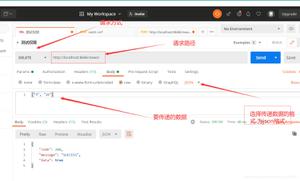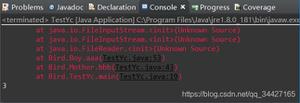C# ObservableCollection和List的区别
| 导读 | 聊聊C# ObservableCollection和ListObservableCollection这个类的方法,对数据的操作很少,重点放在了当自己本事变化的时候(不管是属性,还是集合)会调用发出通知的事件。 |

Collection:为泛型集合提供基类。
INotifyCollectionChanged:将集合的动态更改通知给侦听器,例如,何时添加和移除项或者重置整个集合对象。
INotifyPropertyChanged:向客户端发出某一属性值已更改的通知。
所以再ObservableCollection这个类的方法,对数据的操作很少,重点放在了当自己本事变化的时候(不管是属性,还是集合)会调用发出通知的事件。(一般用于更新UI,当然也可以用于写其他的事情。这个以后会写)
IList:表示可按照索引单独访问的一组对象。
ICollection:定义操作泛型集合的方法。
IEnumerable:公开枚举器,该枚举器支持在指定类型的集合上进行简单迭代。
IList:表示可按照索引单独访问的对象的非泛型集合。
ICollection:定义所有非泛型集合的大小、枚举器和同步方法。
IEnumerable:公开枚举器,该枚举器支持在非泛型集合上进行简单迭代。
MainWindow.xaml:
xaml页面很简单,托2个listbox分别用来绑定ObservableCollection和List
Person.cs:
public class Person{
public string Name { get; set; }
}
MainWindow.xaml.cs:
private List person1 = new List();private ObservableCollection person2 = new ObservableCollection();
public DemoTestDiff()
{
InitializeComponent();
person1.Add(new Person() { Name = "张三" });
person1.Add(new Person() { Name = "李四" });
listbind.ItemsSource = person1;
person2.Add(new Person() { Name = "张三" });
person2.Add(new Person() { Name = "李四" });
observbind.ItemsSource = person2;
}
private void button1_Click(object sender, RoutedEventArgs e)
{
person1.Add(new Person() { Name = "王五" });
person2.Add(new Person() { Name = "王五" });
}
运行程序点击button按钮,然后只有ObservableCollection的有添加。
表示当集合对象的集合改变时,只有ObservableCollection会发出通知更新UI。
这只是他们两个区别之一。
以下方法可以更新ListView的UI:
private ObservableCollection<PreviewListModel> _previewList = new ObservableCollection<PreviewListModel>();/// <summary>
/// 预览信息列表
/// </summary>
public ObservableCollection<PreviewListModel> PreviewList
{
get { return _previewList; }
set { SetProperty(ref _previewList, value); }
//set { _previewList = value; RaisePropertyChanged("PreviewList"); }
}
从数据库检索的出来的集合是List类型,我们需要把它转成ObservableCollection类型怎么办?如下方法:
T tList = new List(tObjectStruct .ToList());ObservableCollection tObjectStruct = new
数据库检索:
public void AdvancedSearchFunc(AdvancedSearchNotification advancedSearchNotification){
try
{
KrayMobileDREntities dataBase = new KrayMobileDREntities();
//每次使用前必须清零
patientInfoHistroryModel.Clear();
//先把数据库的数据提取出来,放到集合中。
List<PatientInfo_Table> patientInfoList =
dataBase.PatientInfo_Table.Where(u => u.PatientKey.ToString().Equals(advancedSearchNotification.PatientInfo)
|| u.PatientID.ToString().Equals(advancedSearchNotification.StudyID)
|| u.PatientName.ToString().Equals(advancedSearchNotification.PatientName)
).ToList();
List<PatientStudy_Table> patientStudyList = dataBase.PatientStudy_Table.Where(u => u.PatientKey < 10).ToList();
//按条件检索集合
List<PatientInfoHistroryModel> list =
(from pI in patientInfoList
where (pI.PatientKey < 1000)
select new PatientInfoHistroryModel()
{
PatientInfo = pI.PatientKey.ToString(),
StudyID = pI.PatientID.ToString(),
PatientName = pI.PatientName.ToString(),
PatientSex = pI.PatientSex.ToString(),
PatientAge = pI.PatientAge.ToString(),
PatientBrith = pI.PatientBirthDate.ToString(),
PatientHeight = pI.PatientHeight.ToString(),
PatientWeight = pI.PatientWeight.ToString(),
RecordSource = pI.PatientSource.ToString(),
//StudyTime = PS.StudyDatetime,
//EquipmentType = PS.StudyPhysician,
//StudyPart = PS.StudyType,
//SequenceAmount = PS.SeriesCount,
StudyTime = pI.PatientAge.ToString(),
EquipmentType = pI.PatientAge.ToString(),
StudyPart = pI.HangFlag.ToString(),
SequenceAmount = pI.HangFlag.ToString(),
StudyStutas = pI.StudyCompleteFlag.ToString(),
SuspendState = pI.HangFlag.ToString(),
FilmPrint = pI.PrintFlag.ToString(),
}).ToList();
patientInfoHistroryModel = list;
dataBase.Dispose();
}
catch (Exception ex)
{
MessageBox.Show("病人历史记录信息表【高级查询】状态下,发生数据库错误。错误信息:--------------" + ex.ToString());
LogHelper.Error("OperateDataSheetViewModel.cs::AdvancedSearchFunc()高级查询失败--" + ex.Message);
}
}
1、ObservableCollection表示一个动态数据集合,在添加项、移除项或刷新整个列表时,此集合将提供通知。
2、List表示可通过索引访问的对象的强类型列表。提供用于对列表进行搜索、排序和操作的方法。(大部分操作用Linq,很强大也很方便。
以上是 C# ObservableCollection和List的区别 的全部内容, 来源链接: utcz.com/a/120868.html









